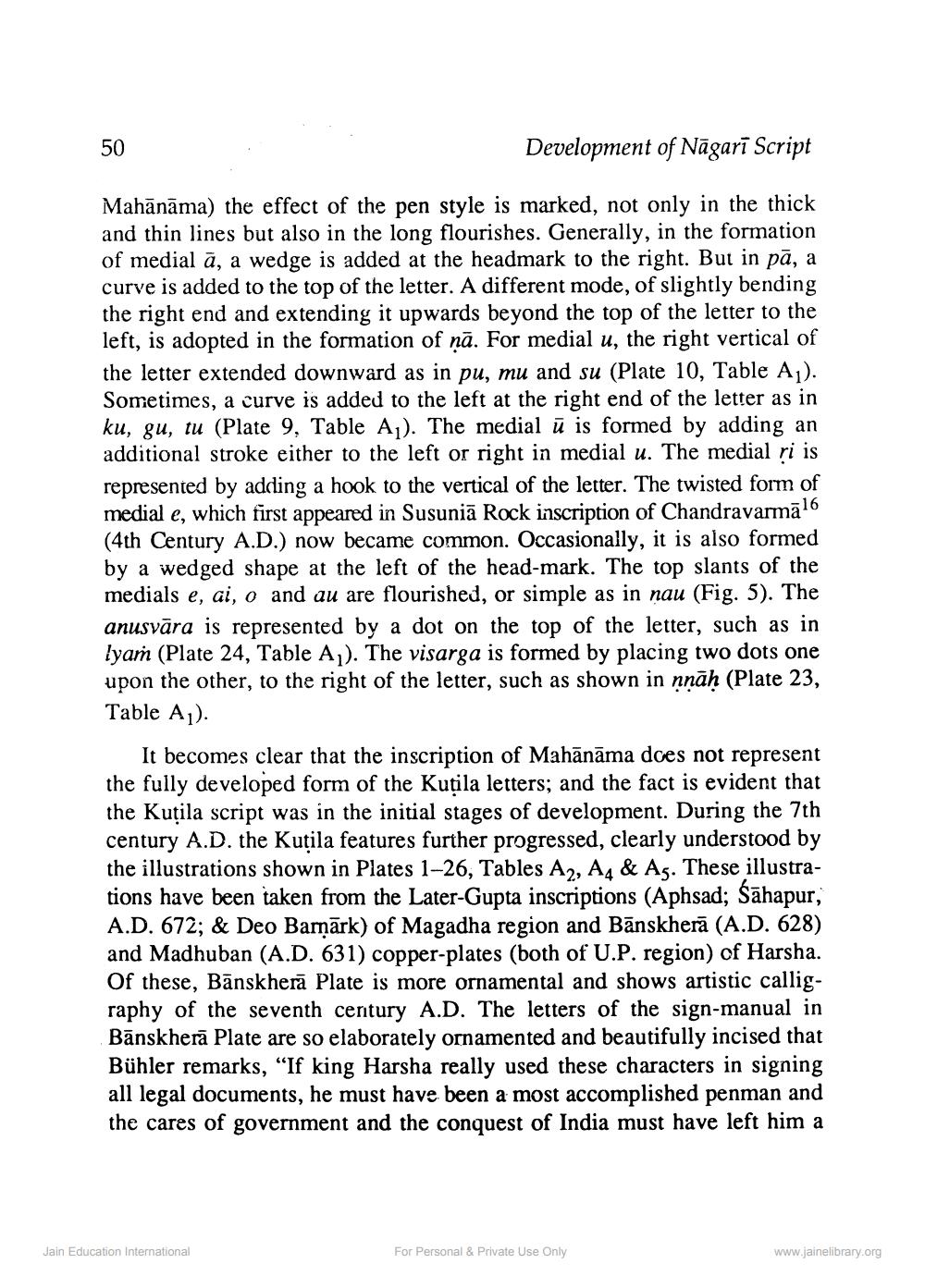________________
50
Development of Nāgarī Script
Mahānāma) the effect of the pen style is marked, not only in the thick and thin lines but also in the long flourishes. Generally, in the formation of medial ā, a wedge is added at the headmark to the right. But in pā, a curve is added to the top of the letter. A different mode, of slightly bending the right end and extending it upwards beyond the top of the letter to the left, is adopted in the formation of nā. For medial u, the right vertical of the letter extended downward as in pu, mu and su (Plate 10, Table A). Sometimes, a curve is added to the left at the right end of the letter as in ku, gu, tu (Plate 9, Table A). The medial ū is formed by adding an additional stroke either to the left or right in medial u. The medial ri is represented by adding a hook to the vertical of the letter. The twisted form of medial e, which first appeared in Susuniā Rock inscription of Chandravarmālo (4th Century A.D.) now became common. Occasionally, it is also formed by a wedged shape at the left of the head-mark. The top slants of the medials e, ai, o and au are flourished, or simple as in nau (Fig. 5). The anusvāra is represented by a dot on the top of the letter, such as in lyaṁ (Plate 24, Table A,). The visarga is formed by placing two dots one upon the other, to the right of the letter, such as shown in nnāh (Plate 23, Table A1).
It becomes clear that the inscription of Mahānāma does not represent the fully developed form of the Kuțila letters; and the fact is evident that the Kuțila script was in the initial stages of development. During the 7th century A.D. the Kuțila features further progressed, clearly understood by the illustrations shown in Plates 1-26, Tables A2, A4 & As. These illustrations have been taken from the Later-Gupta inscriptions (Aphsad; Sāhapur, A.D. 672; & Deo Bamārk) of Magadha region and Bānskherā (A.D. 628) and Madhuban (A.D. 631) copper-plates (both of U.P. region) of Harsha. Of these, Banskherā Plate is more ornamental and shows artistic calligraphy of the seventh century A.D. The letters of the sign-manual in Bānskherā Plate are so elaborately ornamented and beautifully incised that Bühler remarks, "If king Harsha really used these characters in signing all legal documents, he must have been a most accomplished penman and the cares of government and the conquest of India must have left him a
Jain Education International
For Personal & Private Use Only
www.jainelibrary.org




